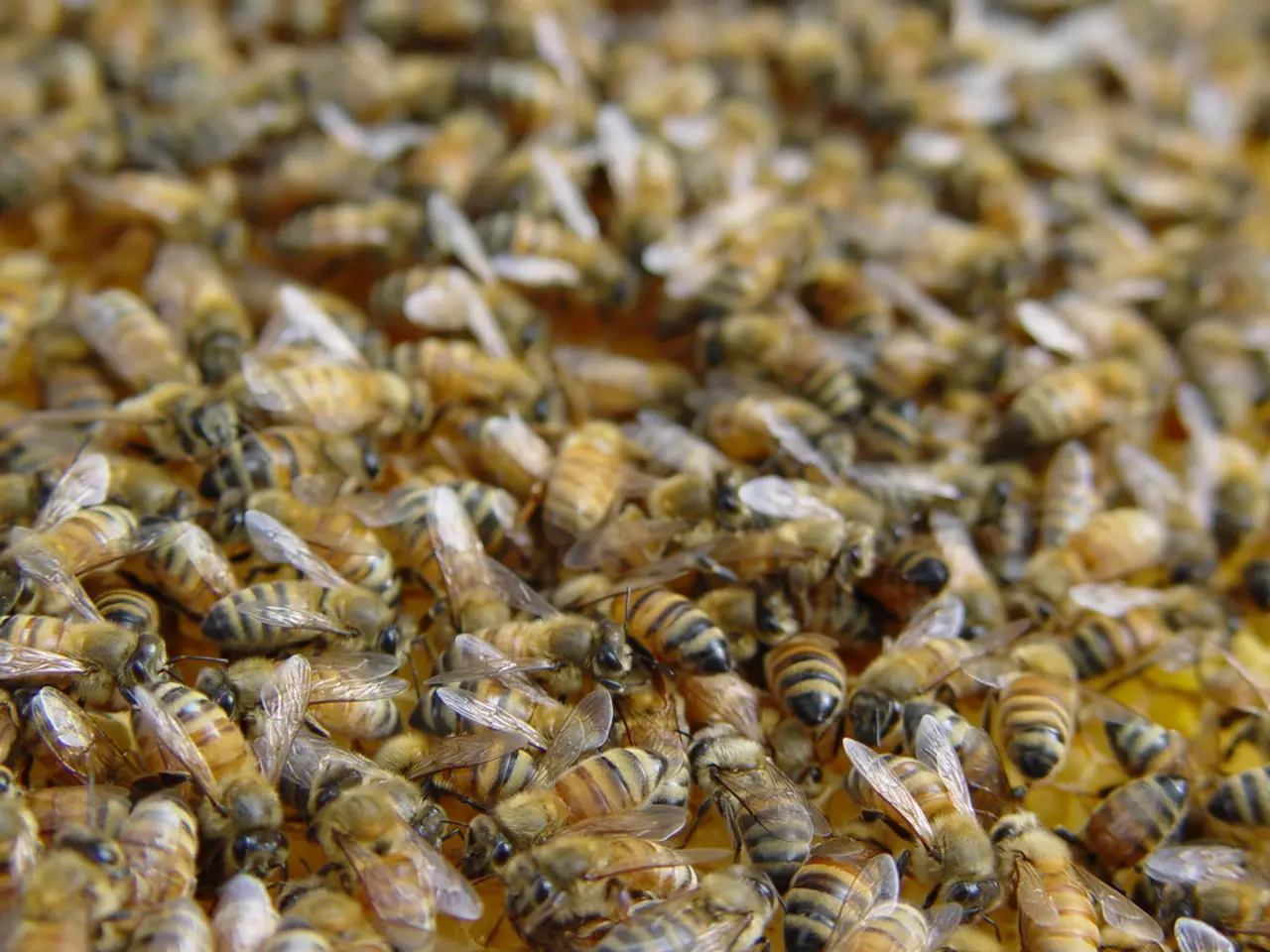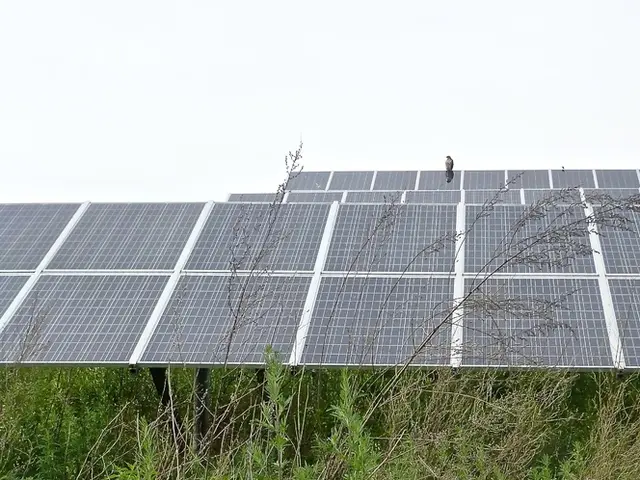Vibrant, Striped Insects Specializing in Carpenter Work: Carpenter Bees
The Eastern Carpenter Bee (Xylocopa virginica), a large and robust insect, is often mistaken for a bumblebee due to its similar appearance. However, upon closer inspection, it can be distinguished by its shiny, almost polished black abdomen with very few hairs, contrasting with the fuzzy thorax and transparent, lightly brown-tinted wings [3][4].
Life Cycle
Female carpenter bees play a unique role in their life cycle. They bore tunnels into sound, untreated wood where they create galleries to lay eggs. The larvae hatch and develop within these wooden tunnels, feeding on stored pollen and nectar provided by the female [1]. This life cycle includes the typical egg, larva, pupa, and adult stages of bees.
Damage Caused
The primary concern with carpenter bees is the damage caused by their tunneling behavior. They bore circular holes and excavate galleries inside wood to create nests. Although they do not eat wood like termites or carpenter ants, their nesting activity can weaken wooden structures such as eaves, decks, railings, and siding over time [1].
Characteristics and Management
Carpenter bees are large insects, approximately three-quarters- to 1-inch long. They can be distinguished from bumblebees by their head width, hairiness, and the absence of large pollen baskets on their hind legs. To manage carpenter bees, it is preferable to locate tunnel entrances during the daytime and conduct any management efforts at nest sites after dark on a cool evening when carpenter bees are less active [2].
Protective clothing should be worn to avoid stings during management efforts, as only female carpenter bees have a stinger. Female carpenter bees are docile and are reported to sting only if handled. Coarse sawdust from the bees' borings can be found near nest sites. A female carpenter bee can sting more than once [2].
Prevention and Impact
Preventing carpenter bee damage involves sealing potential nesting sites. The inner surface of roof fascia boards is a common site of attack for carpenter bees. Nail holes, exposed saw cuts, and unpainted wood are attractive sites for the bees to start their excavations. Carpenter bees are important plant pollinators and feed on pollen and nectar [5].
Initially, carpenter bee damage may seem minor, but extensive wood replacement may be necessary when the strength of structural members is reduced due to carpenter bee damage. Carpenter bees can cause extensive wood damage over time as many generations enlarge existing galleries in wood [1].
In addition to their nesting habits, male carpenter bees may dive-bomb and fly erratically around humans that approach nesting sites, but they are bluffing and are harmless [5].
References:
[1] The University of California Agriculture and Natural Resources. (2015). Carpenter Bees. Retrieved from https://ucanr.edu/sites/UCMG/files/305974.pdf
[2] The Pennsylvania State University Extension. (2020). Carpenter Bees: Identification, Biology, and Control. Retrieved from https://extension.psu.edu/carpenter-bees-identification-biology-and-control
[3] The Xerces Society. (2021). Carpenter Bees. Retrieved from https://www.xerces.org/carpenter-bees/
[4] The North Carolina State University Extension. (2019). Carpenter Bees. Retrieved from https://content.ces.ncsu.edu/carpenter-bees/
[5] The University of Florida IFAS Extension. (2021). Carpenter Bees. Retrieved from https://entnemdept.ufl.edu/creatures/misc/bees/carpenter_bees.htm
Read also:
- Potential perils of artificial intelligence data facilities to American electrical infrastructure due to fire hazards.
- Investment firm Columbia Threadneedle heralds €50 million initial close for its private markets impact fund.
- Researchers in Australia unveiled a colossal stick insect measuring 15 inches, comparable in weight to a golf ball.
- Swimwear crafted from sharkskin








